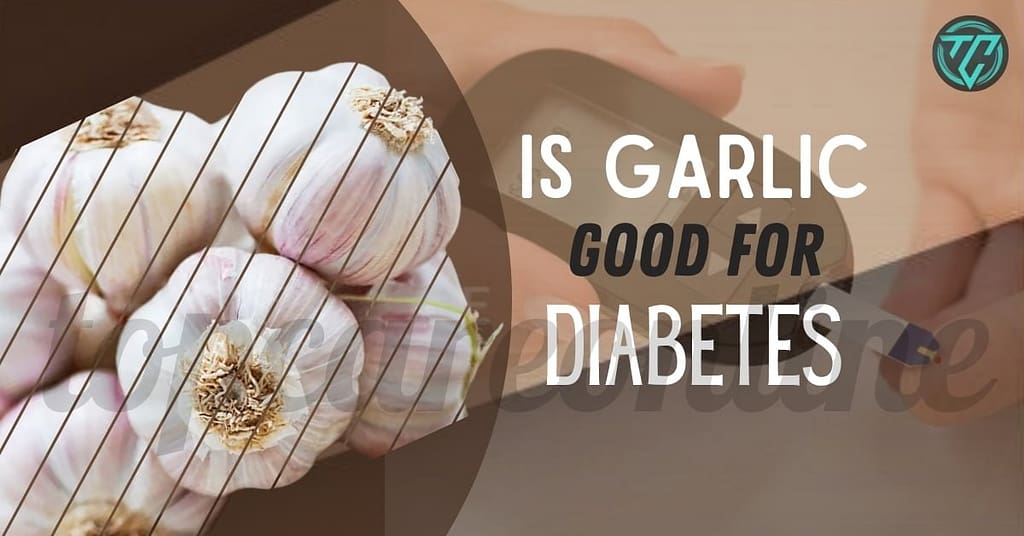summarized version | Nutritional Needs | comprehensive guide | Glycemic Index | Healing and Strength | Healthy Fats | Fiber | Antioxidant-Rich Foods | Meal Plans | FAQs
What are Best Food for Diabetic Cancer Patients
The best foods for diabetic cancer patients are those that help manage blood sugar levels while providing essential nutrients to support cancer treatment.
Here’s a summarized version:
- Non-Starchy Vegetables: Rich in vitamins, minerals, and antioxidants, while being low in calories and carbohydrates.
- Fruits: Option for low-glycemic index fruits packed with fiber, vitamins, and antioxidants.
- Whole Grains: High-fiber whole grains help regulate blood sugar levels and promote digestive health.
- Lean Proteins: Provide essential amino acids for muscle maintenance and immune function.
- Healthy Fats: Sources like avocados, nuts, seeds, and fatty fish support heart health and provide essential fatty acids.
- Dairy or Dairy Alternatives: Choose low-fat or non-dairy options for calcium and protein.
- Herbs and Spices: Flavor enhancers with potential health benefits.
- Hydration: Drink plenty of water and limit sugary and caffeinated beverages.
- Portion Control: Maintain appropriate portion sizes to manage blood sugar levels.
- Balanced Meals: Ensure meals include a mix of carbohydrates, proteins, and fats for sustained energy.
These guidelines provide a solid foundation for creating nutritious meal plans tailored to the needs of diabetic cancer patients. Consulting with healthcare professionals or dietitians can further personalize dietary recommendations to optimize health outcomes.
Learn More About
What are Nutritional Needs for Diabetic Cancer Patients
Managing the nutritional needs for individuals grappling with both diabetes and cancer presents a unique set of challenges. The interplay between these two conditions requires a meticulously balanced diet to support overall health and treatment efficacy.
For diabetic cancer patients, the goal is to maintain stable blood glucose levels while providing the necessary nutrients to combat cancer and support the immune system. Nutritional needs for diabetic cancer patients are nuanced and require careful consideration to manage both conditions effectively.
Here’s a comprehensive guide:
- Balanced Macronutrients: Diabetic cancer patients should aim for a balanced intake of carbohydrates, proteins, and fats. This helps stabilize blood sugar levels while providing essential nutrients for overall health.
- Complex Carbohydrates: Choose complex carbohydrates that are high in fiber and low in glycemic index to prevent spikes in blood sugar levels. Examples include whole grains like brown rice, quinoa, whole wheat pasta, and oatmeal.
- Lean Proteins: Incorporate lean protein sources such as poultry, fish, tofu, legumes, and low-fat dairy products. Protein is important for maintaining muscle mass, supporting immune function, and aiding in the healing process.
- Healthy Fats: Include sources of healthy fats such as avocados, nuts, seeds, olive oil, and fatty fish like salmon. These fats help reduce inflammation, support heart health, and improve insulin sensitivity.
- Fiber-Rich Foods: Increase intake of fiber-rich foods like fruits, vegetables, whole grains, legumes, and nuts. Fiber aids in digestion, promotes satiety, and helps regulate blood sugar levels.
- Limited Added Sugars: Minimize consumption of foods and beverages high in added sugars, as they can cause rapid spikes in blood sugar levels. Opt for naturally sweet options like fruit or choose sugar-free alternatives.
- Portion Control: Pay attention to portion sizes to avoid overeating, which can lead to fluctuations in blood sugar levels. Use measuring cups, spoons, or visual cues to gauge appropriate serving sizes.
- Hydration: Stay well-hydrated by drinking plenty of water throughout the day. Limit intake of sugary beverages and opt for water, herbal teas, or infused water instead.
- Regular Meal Timing: Aim for consistent meal timing and spacing to help stabilize blood sugar levels. Eating meals and snacks at regular intervals can prevent blood sugar fluctuations and promote better glycemic control.
- Individualized Nutrition Plan: Work with a registered dietitian who specializes in oncology and diabetes care to develop a personalized nutrition plan tailored to your specific needs, preferences, and treatment goals.
- Monitoring and Adjustment: Monitor blood sugar levels regularly and make adjustments to your diet and medication regimen as needed in consultation with your healthcare team. Cancer treatment may affect blood sugar control, so it’s important to stay vigilant and proactive.
By focusing on these nutritional principles and collaborating closely with healthcare professionals, diabetic cancer patients can optimize their dietary intake to support overall health, manage blood sugar levels, and enhance their quality of life during cancer treatment.
Read About
Glycemic Index and Its Importance for diabetic cancer patients
The glycemic index (GI) is a critical concept for diabetic cancer patients to grasp as it plays a significant role in managing blood sugar levels. The GI measures how quickly a carbohydrate-containing food raises blood glucose levels after consumption.
Foods are ranked on a scale from 0 to 100, with higher values indicating quicker spikes in blood sugar. For individuals managing both diabetes and cancer, maintaining stable glucose levels is paramount for overall health and effective disease management.
Low GI foods, which typically have a GI value of 55 or less, are absorbed more slowly, resulting in a gradual rise in blood sugar. This helps in preventing the rapid fluctuations that can be particularly harmful to diabetic cancer patients.
Examples of low GI foods include whole grains like barley and oats, legumes such as lentils and chickpeas, and most non-starchy vegetables like spinach and broccoli. Fruits like apples, oranges, and berries also fall within the low GI category and can be beneficial when included in a balanced diet.
Incorporating low GI foods into daily meals can be simple and highly effective. One practical tip is to replace high GI foods with their low GI counterparts. For instance, instead of white rice or white bread, opt for brown rice or whole grain bread. Additionally, combining low GI foods with protein and healthy fats can further stabilize blood sugar levels.
For example, pairing a serving of lentils with avocado or adding nuts and seeds to a salad can create a more balanced meal that supports glucose control. Understanding and utilizing the glycemic index is a valuable strategy for diabetic cancer patients.
By selecting low GI foods and incorporating them into balanced meals, patients can better manage their blood sugar levels, contributing to improved overall health and potentially enhancing the effectiveness of their cancer treatments.
Proteins for Diabetic Cancer Patients: Building Blocks for Healing and Strength
Protein plays a critical role in the diet of diabetic cancer patients, serving as the building blocks for muscle maintenance, healing, and overall health. Adequate protein intake is essential for the body to repair tissues, produce enzymes, and maintain a robust immune system.
For diabetic cancer patients, who are often dealing with the complications of both conditions, focusing on high-protein, low-fat food options is particularly important for managing their health effectively.
Protein is vital for muscle maintenance, especially during cancer treatment, which can lead to muscle wasting and weakness. Moreover, protein aids in healing processes, enabling the body to recover from surgeries, treatments, and the overall strain of fighting cancer.
Given the dual challenges posed by diabetes and cancer, choosing the right protein sources can help in maintaining stable blood sugar levels while providing the necessary nutrients for healing and strength.
Proteins are essential for diabetic cancer patients as they play a crucial role in maintaining muscle mass, supporting immune function, and aiding in the healing process. When selecting protein sources, it’s important for diabetic cancer patients to consider options that not only provide protein but also fit into their overall dietary plan for managing both conditions.
Here are some protein-rich options suitable for diabetic cancer patients:
- Lean Meats: Choose lean cuts of poultry such as skinless chicken or turkey breast. Trim visible fat from meat to reduce saturated fat intake. Opt for baking, grilling, or broiling methods of cooking rather than frying.
- Fish: Fatty fish like salmon, mackerel, and trout are excellent sources of protein and heart-healthy omega-3 fatty acids. Aim to include fish in your diet at least twice a week. Canned fish like tuna and sardines are convenient options.
- Tofu and Tempeh: These plant-based protein sources are suitable for vegetarian or vegan diabetic cancer patients. They are versatile ingredients that can be incorporated into stir-fries, salads, soups, and sandwiches.
- Legumes: Beans, lentils, and chickpeas are high in protein, fiber, and various nutrients. They can be included in salads, soups, stews, and side dishes. Try adding beans to casseroles or blending chickpeas into hummus for a nutritious snack.
- Low-Fat Dairy: Choose low-fat or fat-free dairy products such as Greek yogurt, cottage cheese, and skim milk. These dairy foods provide protein along with calcium and vitamin D for bone health.
- Eggs: Eggs are a versatile and affordable source of high-quality protein. They can be prepared in various ways, including boiled, scrambled, poached, or as omelets. Egg whites are particularly low in calories and fat while being rich in protein.
- Nuts and Seeds: Incorporate nuts and seeds into your diet as protein-rich snacks or additions to meals. Almonds, walnuts, peanuts, chia seeds, and flaxseeds are nutrient-dense options that provide protein, healthy fats, and fiber.
- Protein Supplements: In some cases, protein supplements such as whey protein powder or plant-based protein powders may be beneficial, especially for individuals who have difficulty meeting their protein needs through whole foods alone. Consult with a healthcare professional or dietitian before adding supplements to your diet.
When including protein in your meals and snacks, aim to balance it with other macronutrients like carbohydrates and fats to create well-rounded and satisfying meals. Additionally, focus on portion control and mindful eating to help manage blood sugar levels and support overall health during cancer treatment.
Healthy Fats for Diabetic Cancer Patients: Essential for Energy and Cellular Health
Incorporating healthy fats into the diet is crucial for diabetic cancer patients, as they play a vital role in providing energy and maintaining cellular health. Unlike other forms of fats, unsaturated fats are beneficial and can help manage blood sugar levels while supporting overall well-being.
These fats are known to enhance heart health, reduce inflammation, and improve cholesterol levels, which are particularly important for individuals dealing with diabetes and cancer.
Healthy fats can be broadly categorized into monounsaturated fats and polyunsaturated fats. Monounsaturated fats, found in foods such as avocados, olive oil, and certain nuts, are known to improve insulin sensitivity, making them an excellent choice for diabetic patients.
Polyunsaturated fats, which include omega-3 and omega-6 fatty acids, are essential for cellular function and can be found in sources like flaxseeds, chia seeds, and fatty fish such as salmon. These fats support brain health, reduce inflammation, and can help in managing the complications associated with both diabetes and cancer.
Healthy fats are important for diabetic cancer patients as they provide essential nutrients, support heart health, and help regulate blood sugar levels. When choosing healthy fats, it’s important to focus on sources that are rich in monounsaturated and polyunsaturated fats while limiting saturated and trans fats.
Here are some healthy fat options suitable for diabetic cancer patients:
- Avocados: Avocados are rich in monounsaturated fats, which can help improve insulin sensitivity and reduce inflammation. They also provide fiber, vitamins, and minerals. Add sliced avocado to salads, sandwiches, or smoothies, or enjoy mashed avocado as a spread or dip.
- Nuts and Seeds: Almonds, walnuts, pecans, pistachios, chia seeds, flaxseeds, and hemp seeds are excellent sources of healthy fats, protein, and fiber. Incorporate them into meals or snacks by adding them to yogurt, oatmeal, salads, or stir-fries, or enjoy them on their own as a snack.
- Olive Oil: Extra virgin olive oil is rich in monounsaturated fats and antioxidants, which can help reduce inflammation and protect against heart disease. Use olive oil for cooking, salad dressings, or drizzling over vegetables and whole grains.
- Fatty Fish: Fatty fish such as salmon, mackerel, trout, sardines, and herring are rich in omega-3 fatty acids, which have anti-inflammatory properties and are beneficial for heart health. Aim to include fatty fish in your diet at least twice a week.
- Flaxseeds and Chia Seeds: These seeds are high in alpha-linolenic acid (ALA), a type of omega-3 fatty acid. They also provide fiber and protein. Sprinkle ground flaxseeds or chia seeds on yogurt, oatmeal, salads, or smoothies for a nutritious boost.
- Coconut Oil: While coconut oil is high in saturated fat, it contains medium-chain triglycerides (MCTs) which may have some potential benefits for individuals with diabetes, such as improving insulin sensitivity. However, use coconut oil in moderation and consider its saturated fat content.
- Nut Butters: Natural nut butters like almond butter or peanut butter provide healthy fats, protein, and fiber. Look for varieties without added sugars or hydrogenated oils. Enjoy nut butter on whole grain toast, fruit slices, or as a dip for vegetables.
- Seeds: Pumpkin seeds, sunflower seeds, and sesame seeds are rich in healthy fats, protein, and minerals like magnesium and zinc. Sprinkle them on salads, yogurt, or soups for added crunch and nutrition.
Including a variety of these healthy fats in your diet can help support overall health and well-being while managing both diabetes and cancer. Remember to consume fats in moderation and focus on incorporating them into a balanced diet alongside other nutrient-rich foods.
Fiber: Regulating Blood Sugar and Supporting Digestion
Dietary fiber plays a pivotal role in the management of blood sugar levels and the promotion of digestive health, making it an essential component of the diet for diabetic cancer patients. Fiber is categorized into two main types: soluble and insoluble, each offering unique health benefits.
Fiber is an essential nutrient for diabetic cancer patients as it offers numerous health benefits, including helping to regulate blood sugar levels, promoting digestive health, and supporting weight management.
Here’s how fiber can be beneficial for individuals managing both diabetes and cancer, along with some fiber-rich food options suitable for diabetic cancer patients:
- Blood Sugar Control: Fiber slows down the absorption of sugar in the bloodstream, which can help prevent spikes in blood sugar levels after meals. This can be particularly beneficial for individuals with diabetes. Foods high in fiber have a lower glycemic index, meaning they cause a slower and more gradual rise in blood sugar levels.
- Digestive Health: Fiber adds bulk to stool and helps promote regular bowel movements, which can alleviate constipation—a common side effect of certain cancer treatments and medications. Additionally, a diet high in fiber can reduce the risk of developing colorectal cancer and other digestive disorders.
- Heart Health: High-fiber foods are associated with a reduced risk of heart disease, which is important for individuals with diabetes who are at a higher risk of cardiovascular complications. Fiber helps lower LDL (bad) cholesterol levels and may also help reduce blood pressure.
- Weight Management: Fiber-rich foods tend to be filling and can help control appetite, which may aid in weight management. Maintaining a healthy weight is important for overall health and can help reduce the risk of cancer recurrence and other chronic diseases.
Here are some fiber-rich food options suitable for diabetic cancer patients:
- Vegetables: Broccoli, Brussels sprouts, carrots, spinach, kale, and other leafy greens are excellent sources of fiber, vitamins, and minerals. Aim to fill half your plate with non-starchy vegetables at each meal.
- Fruits: Berries (such as strawberries, blueberries, raspberries), apples, pears, oranges, and kiwi are rich in fiber and antioxidants. Enjoy fresh fruits as snacks or add them to yogurt, oatmeal, or salads.
- Whole Grains: Choose whole grains like oats, quinoa, brown rice, barley, whole wheat bread, and whole grain pasta. These grains are higher in fiber and nutrients compared to refined grains.
- Legumes: Beans, lentils, chickpeas, and peas are excellent sources of fiber and plant-based protein. Add them to soups, stews, salads, or chili for a nutritious boost.
- Nuts and Seeds: Almonds, walnuts, chia seeds, flaxseeds, and pumpkin seeds are rich in fiber, healthy fats, and protein. Enjoy them as snacks or add them to yogurt, salads, or smoothies.
- Psyllium Husk: Psyllium husk is a soluble fiber supplement that can be added to foods or beverages to increase fiber intake. It may help regulate bowel movements and improve digestive health.
When increasing fiber intake, it’s essential to do so gradually and drink plenty of water to prevent digestive discomfort. Aim for a balanced diet that includes a variety of fiber-rich foods to reap the full benefits of this important nutrient. If you have any specific dietary concerns or restrictions, consult with a registered dietitian or healthcare provider for personalized guidance.
By integrating a balanced mix of soluble and insoluble fiber into their diet, diabetic cancer patients can achieve better blood sugar regulation and improve their overall digestive health, contributing to enhanced well-being and quality of life.
Antioxidant-Rich Foods: Fighting Free Radicals
Incorporating antioxidant-rich foods into the diet of diabetic cancer patients is crucial for combating oxidative stress and supporting the immune system. Oxidative stress, caused by free radicals, can exacerbate both cancer and diabetes by damaging cells and tissues. Antioxidants neutralize these free radicals, thereby reducing the risk of further complications.
For diabetic cancer patients, focusing on antioxidant-rich foods can be particularly beneficial due to their potential to reduce inflammation, support immune function, and protect against cell damage. Here are some antioxidant-rich foods suitable for diabetic cancer patients:
- Berries: Blueberries, strawberries, raspberries, and blackberries are packed with antioxidants such as anthocyanins, flavonoids, and vitamin C. These fruits can be enjoyed fresh, added to yogurt or oatmeal, or blended into smoothies.
- Leafy Greens: Spinach, kale, Swiss chard, and collard greens are rich in antioxidants like vitamins C and E, beta-carotene, and lutein. These leafy greens are also low in calories and carbohydrates, making them ideal for diabetic individuals.
- Cruciferous Vegetables: Broccoli, cauliflower, Brussels sprouts, and cabbage are excellent sources of antioxidants such as sulforaphane and indole-3-carbinol. These vegetables can be incorporated into salads, stir-fries, or roasted dishes.
- Tomatoes: Tomatoes contain antioxidants like lycopene, which has been linked to a reduced risk of certain cancers, including prostate cancer. Enjoy tomatoes in salads, sandwiches, sauces, or soups.
- Citrus Fruits: Oranges, lemons, limes, and grapefruits are rich in vitamin C and flavonoids, which have antioxidant properties. These fruits can be consumed whole, juiced, or added to salads and desserts.
- Nuts and Seeds: Almonds, walnuts, pecans, chia seeds, and flaxseeds are packed with antioxidants, healthy fats, and fiber. Enjoy them as snacks or add them to salads, yogurt, or baked goods.
- Green Tea: Green tea is rich in catechins, powerful antioxidants that may help protect against cancer and improve insulin sensitivity in diabetic individuals. Enjoy green tea as a beverage or use it as a base for smoothies or iced tea.
- Dark Chocolate: Dark chocolate with a high cocoa content (70% or higher) contains flavonoids, which have antioxidant properties. Enjoy a small piece of dark chocolate as an occasional treat.
Incorporating these antioxidant-rich foods into a balanced diet can help support overall health and well-being in diabetic cancer patients. However, it’s essential to consult with a healthcare professional or registered dietitian before making any significant dietary changes, especially during cancer treatment. They can provide personalized guidance based on individual health needs and treatment goals.
Meal Plans for Cancer Patients with Diabetes
Effective meal planning and preparation are crucial for diabetic cancer patients to manage their blood sugar levels and meet their nutritional needs. Creating balanced meals that incorporate appropriate portion control and timing can significantly enhance overall health and well-being. Here are some practical guidelines to consider when planning meals:
Designing meal plans for cancer patients with diabetes requires careful consideration of both conditions’ dietary needs. Here’s a sample meal plan that focuses on nutrient-rich, balanced meals suitable for managing both cancer and diabetes:
Breakfast:
- Option 1: Veggie omelet made with egg whites or whole eggs, spinach, bell peppers, tomatoes, and onions. Serve with a slice of whole grain toast.
- Option 2: Greek yogurt parfait with plain Greek yogurt, mixed berries (such as strawberries, blueberries, and raspberries), and a sprinkle of nuts or seeds for added crunch.
- Option 3: Overnight oats made with rolled oats, unsweetened almond milk, chia seeds, and sliced fruit (such as bananas or peaches). Sweeten with a small amount of honey or stevia if desired.
Mid-Morning Snack:
- Handful of raw almonds or walnuts.
- Sliced veggies (carrots, cucumber, bell peppers) with hummus.
- Hard-boiled egg.
Lunch:
- Option 1: Grilled chicken or tofu salad with mixed greens, cherry tomatoes, cucumbers, avocado, and a vinaigrette dressing made with olive oil and vinegar.
- Option 2: Quinoa salad with black beans, corn, diced bell peppers, cherry tomatoes, avocado, and lime-cilantro dressing.
- Option 3: Whole grain wrap filled with turkey breast or grilled vegetables, lettuce, tomato, avocado, and mustard.
Afternoon Snack:
- Cottage cheese with sliced fruit (such as pineapple or pear).
- Whole grain crackers with almond butter.
- Homemade smoothie with unsweetened almond milk, spinach, banana, and protein powder.
Dinner:
- Option 1: Baked salmon with roasted Brussels sprouts and sweet potatoes.
- Option 2: Stir-fried tofu with broccoli, bell peppers, snap peas, and brown rice.
- Option 3: Lentil soup with carrots, celery, onions, and kale. Serve with a side salad dressed with olive oil and lemon juice.
Evening Snack:
- Low-fat string cheese with whole grain crackers.
- Air-popped popcorn sprinkled with nutritional yeast.
- Sliced apple with a small amount of peanut butter.
Additional Tips:
- Stay hydrated throughout the day by drinking water, herbal tea, or infused water.
- Aim for balanced meals that include a combination of lean protein, complex carbohydrates, healthy fats, and fiber.
- Monitor portion sizes and try to eat smaller, more frequent meals to help manage blood sugar levels.
- Limit added sugars, refined carbohydrates, and processed foods.
- Consider consulting with a registered dietitian for personalized meal planning guidance tailored to your specific dietary needs and preferences.
This meal plan provides a variety of nutrient-rich foods while considering the dietary restrictions and health goals of both cancer and diabetes management. Adjust portion sizes and food choices based on individual preferences, nutritional needs, and any treatment-related side effects.
Common Query
Should cancer patients avoid sugar?
Cancer patients, particularly those with diabetes or at risk of developing diabetes, managing sugar intake is important, but it’s not as simple as avoiding all sugar altogether. In summary, while cancer patients should be mindful of their sugar intake, especially added sugars from processed foods, they don’t necessarily need to avoid all sugar completely.
Instead, they should focus on consuming a balanced diet rich in whole foods and low in processed sugars to support their nutritional needs and overall health throughout their cancer journey. Consulting with healthcare professionals can help ensure that dietary choices align with individual health goals and treatment plans.
What are fruits and vegetables for diabetics
For diabetics, selecting fruits and vegetables that are lower in sugar and higher in fiber is typically recommended to help manage blood sugar levels. Here’s a list of fruits and vegetables that are generally suitable for diabetics due to their lower glycemic index and higher fiber content:
Fruits:
- Berries: Strawberries, blueberries, raspberries, and blackberries are low in sugar and high in fiber and antioxidants, making them excellent choices for diabetics.
- Apples: Rich in fiber, vitamins, and antioxidants, apples can be a satisfying and nutritious option for diabetics when eaten in moderation.
- Pears: Pears are another fruit option that is high in fiber and lower in sugar, helping to promote satiety and stabilize blood sugar levels.
- Citrus Fruits: Oranges, grapefruits, and tangerines are relatively low in sugar and packed with vitamin C and fiber, making them suitable choices for diabetics.
- Kiwi: Kiwi is a nutrient-dense fruit that is high in fiber and vitamin C, offering both sweetness and nutritional benefits for diabetics.
- Cherries: Cherries are lower in sugar compared to some other fruits and contain antioxidants that may have anti-inflammatory properties.
- Plums: Plums are high in fiber and antioxidants, making them a good choice for diabetics looking to satisfy their sweet cravings.
- Apricots: Fresh apricots are lower in sugar and high in fiber, vitamins A and C, and potassium, making them a nutritious option for diabetics.
Vegetables:
- Leafy Greens: Spinach, kale, Swiss chard, and other leafy greens are low in calories and carbohydrates but high in fiber, vitamins, and minerals, making them ideal for diabetics.
- Cruciferous Vegetables: Broccoli, cauliflower, Brussels sprouts, and cabbage are rich in fiber, vitamins, and antioxidants, with a lower glycemic index compared to starchy vegetables.
- Tomatoes: Tomatoes are low in calories and carbohydrates but high in fiber, vitamin C, and lycopene, making them a healthy choice for diabetics.
- Bell Peppers: Bell peppers are rich in fiber, vitamins A and C, and antioxidants, with a relatively low carbohydrate content compared to other vegetables.
- Cucumbers: Cucumbers are low in calories and carbohydrates but high in water and fiber, making them a refreshing and hydrating option for diabetics.
- Zucchini: Zucchini is low in calories and carbohydrates but high in fiber, vitamins, and minerals, making it a versatile and nutritious vegetable for diabetics.
- Green Beans: Green beans are low in calories and carbohydrates but high in fiber, vitamins, and minerals, making them a nutritious addition to a diabetic-friendly diet.
- Asparagus: Asparagus is low in calories and carbohydrates but high in fiber, folate, and vitamins A, C, and K, making it a healthy choice for diabetics.
Including a variety of these fruits and vegetables in your diet can help you meet your nutritional needs while managing your blood sugar levels effectively. It’s essential to monitor portion sizes and balance your intake of carbohydrates with proteins and healthy fats to maintain stable blood sugar levels throughout the day.
Additionally, consulting with a registered dietitian or healthcare provider can help you develop a personalized meal plan that meets your specific dietary requirements and health goals.
What foods are good for cancer patients with no appetite
For cancer patients experiencing a loss of appetite, it’s important to focus on nutrient-dense foods that are easy to eat and digest.
Here are some gentle, nourishing options to consider:
- Smoothies and Shakes: Blend together fruits, vegetables, protein powder, yogurt, and nut butter to create nutrient-packed smoothies that are easy to drink and can help boost calorie and nutrient intake.
- Soups and Broths: Warm, comforting soups and broths can be soothing and easy to digest. Opt for clear broths, vegetable soups, or pureed soups made with nutrient-rich ingredients like vegetables, legumes, and lean proteins.
- High-Calorie, High-Protein Foods: Include calorie-dense and protein-rich foods in your diet, such as nut butters, avocados, cheese, eggs, yogurt, tofu, and lean meats. These foods provide essential nutrients and energy to support the body during treatment.
- Small, Frequent Meals: Instead of large meals, aim to eat smaller, more frequent meals and snacks throughout the day. This approach can help prevent feelings of fullness and make it easier to consume enough calories and nutrients.
- Nutrient-Rich Snacks: Keep nutrient-dense snacks on hand for when hunger strikes, such as nuts, seeds, dried fruits, whole grain crackers, cheese, yogurt, and hummus with vegetables.
- Soft Foods: Choose soft, easy-to-chew foods that are gentle on the digestive system, such as cooked vegetables, mashed potatoes, rice, oatmeal, scrambled eggs, and smooth nut butters.
- Hydration: Stay hydrated by drinking plenty of fluids throughout the day, including water, herbal teas, and diluted fruit juices. Avoid caffeinated and sugary beverages, as they can contribute to dehydration.
- Flavor Enhancers: Experiment with herbs, spices, and condiments to add flavor and variety to your meals. Fresh herbs, garlic, ginger, lemon juice, soy sauce, and vinegar can help enhance the taste of foods without adding extra calories.
- Nutritional Supplements: Consider using nutritional supplements or meal replacement drinks to help meet your calorie and nutrient needs if eating solid foods is challenging. Consult with a healthcare provider or registered dietitian for personalized recommendations.
- Listen to Your Body: Pay attention to your body’s hunger and fullness cues, and eat when you feel hungry, even if it’s not at traditional meal times. Focus on nourishing your body with nutrient-rich foods, but also be gentle with yourself if you’re not able to eat as much as usual.
It’s essential to work closely with a healthcare team, including a registered dietitian, to develop a personalized nutrition plan that meets your individual needs and preferences during cancer treatment. They can provide guidance and support to help you maintain adequate nutrition and manage any treatment-related side effects.
How to control blood sugar during chemotherapy
Managing blood sugar levels during chemotherapy can be challenging, but it’s crucial for overall health and well-being. Here are some tips to help control blood sugar during chemotherapy:
- Monitor Blood Sugar Regularly: Check your blood sugar levels as recommended by your healthcare provider. Monitoring allows you to track changes and make adjustments to your diet and medication as needed.
- Follow a Balanced Diet: Aim for a balanced diet that includes lean proteins, complex carbohydrates, healthy fats, and plenty of fruits and vegetables. Avoid sugary foods and refined carbohydrates, as they can cause blood sugar spikes.
- Eat Regular Meals and Snacks: Stick to a consistent meal schedule and avoid skipping meals. Eating smaller, more frequent meals and snacks throughout the day can help stabilize blood sugar levels.
- Choose Low-Glycemic Index Foods: Focus on foods with a low glycemic index (GI), which are less likely to cause rapid spikes in blood sugar levels. Examples include whole grains, legumes, non-starchy vegetables, and most fruits.
- Limit Added Sugars: Minimize your intake of foods and beverages high in added sugars, such as sweets, sugary drinks, and processed snacks. Opt for naturally sweet foods like fruits to satisfy your sweet tooth.
- Stay Hydrated: Drink plenty of water throughout the day to stay hydrated. Limit sugary beverages and opt for water, herbal tea, or infused water instead.
- Exercise Regularly: Engage in regular physical activity as tolerated, as exercise can help improve insulin sensitivity and lower blood sugar levels. Consult with your healthcare provider before starting any new exercise program.
- Manage Stress: Practice stress-reduction techniques such as deep breathing, meditation, yoga, or tai chi to help lower stress levels, which can affect blood sugar control.
- Communicate with Your Healthcare Team: Keep your healthcare team informed about any changes in your blood sugar levels or symptoms you may be experiencing. They can provide guidance and support to help you manage your diabetes during chemotherapy.
- Take Medications as Prescribed: If you have diabetes and are taking medication to manage your blood sugar, continue to take your medication as prescribed by your healthcare provider. Do not make any changes to your medication regimen without consulting your healthcare team.
- Be Prepared for Side Effects: Some chemotherapy medications can cause nausea, vomiting, diarrhea, or changes in appetite, which may affect blood sugar control. Work with your healthcare team to manage these side effects and adjust your diet as needed.
- Seek Support: Joining a support group or connecting with others who are going through similar experiences can provide emotional support and practical tips for managing diabetes during chemotherapy.
By following these tips and working closely with your healthcare team, you can better control your blood sugar levels and maintain overall health and well-being during chemotherapy.
Which fruit kills diabetes
No single fruit can “kill” diabetes. However, certain fruits, when consumed as part of a balanced diet, can be beneficial for managing diabetes by providing essential nutrients, fiber, and antioxidants. Here are some fruits that may be particularly helpful for individuals with diabetes:
- Berries: Berries such as strawberries, blueberries, raspberries, and blackberries are low in sugar and high in fiber, vitamins, and antioxidants. They have a lower glycemic index compared to many other fruits, meaning they cause a slower and more gradual rise in blood sugar levels.
- Apples: Apples are rich in fiber, particularly soluble fiber, which can help regulate blood sugar levels and improve digestion. Eating apples with the skin on provides the most fiber and nutrients.
- Citrus Fruits: Oranges, grapefruits, lemons, and limes are low in calories and carbohydrates but high in vitamin C and fiber. They can be a refreshing and nutritious addition to a diabetic-friendly diet.
- Kiwi: Kiwifruit is packed with fiber, vitamins C and K, and antioxidants. It has a relatively low glycemic index and can help support digestive health and immune function.
- Cherries: Cherries are rich in antioxidants and have anti-inflammatory properties. They also have a lower glycemic index compared to many other fruits, making them a suitable option for individuals with diabetes.
- Plums: Plums are high in fiber, vitamins, and antioxidants, and they have a relatively low glycemic index. They can help promote satiety and regulate blood sugar levels when consumed in moderation.
While these fruits can be part of a healthy diet for individuals with diabetes, it’s essential to consume them in moderation and consider factors such as portion size, timing, and overall carbohydrate intake.
It’s also important to maintain a balanced diet that includes a variety of fruits, vegetables, lean proteins, whole grains, and healthy fats to support overall health and well-being. Additionally, individuals with diabetes should monitor their blood sugar levels regularly and consult with a healthcare provider or registered dietitian for personalized dietary recommendations.
By following these meal planning and preparation tips, diabetic cancer patients can better manage their blood sugar levels and support their overall health during treatment and recovery.








